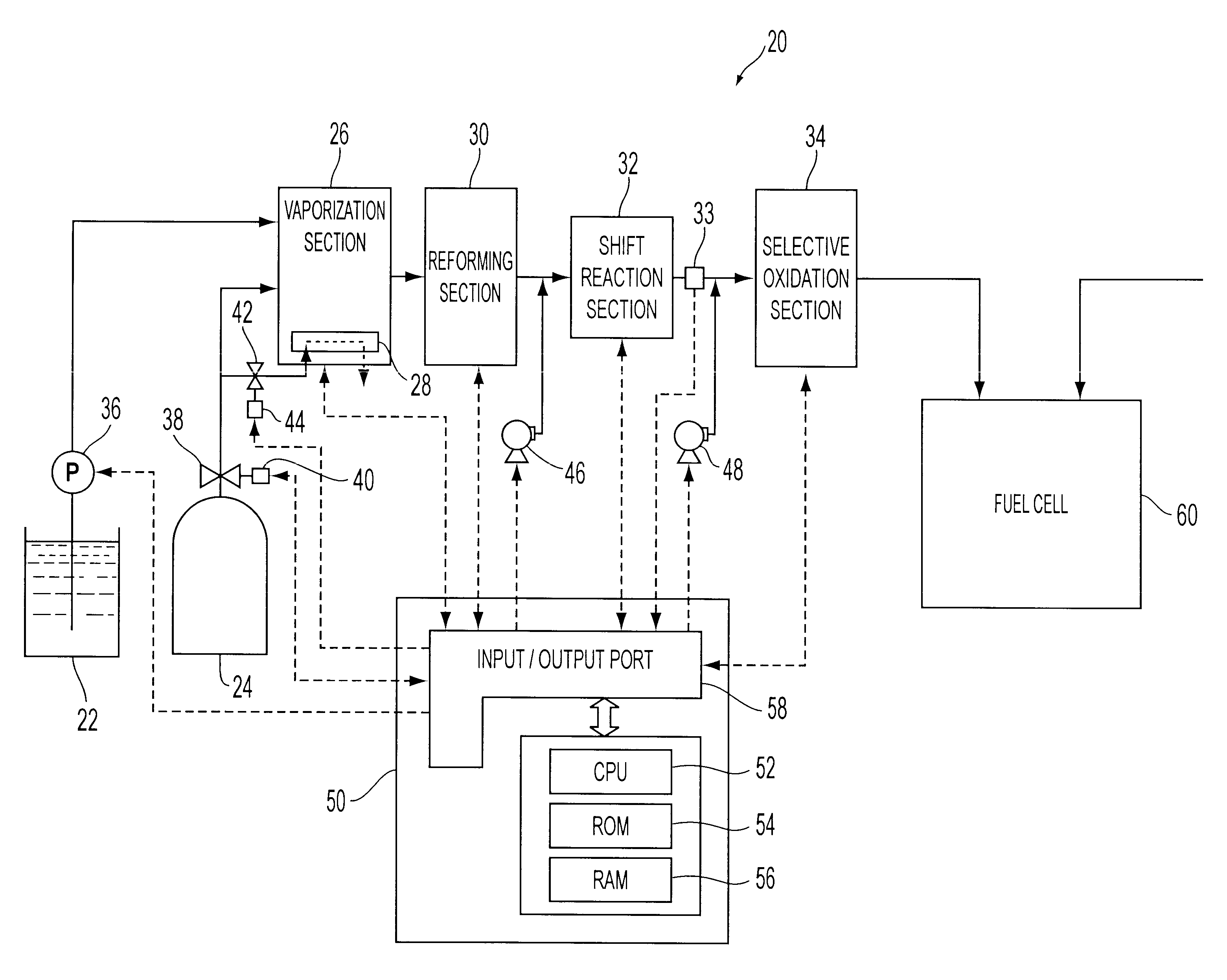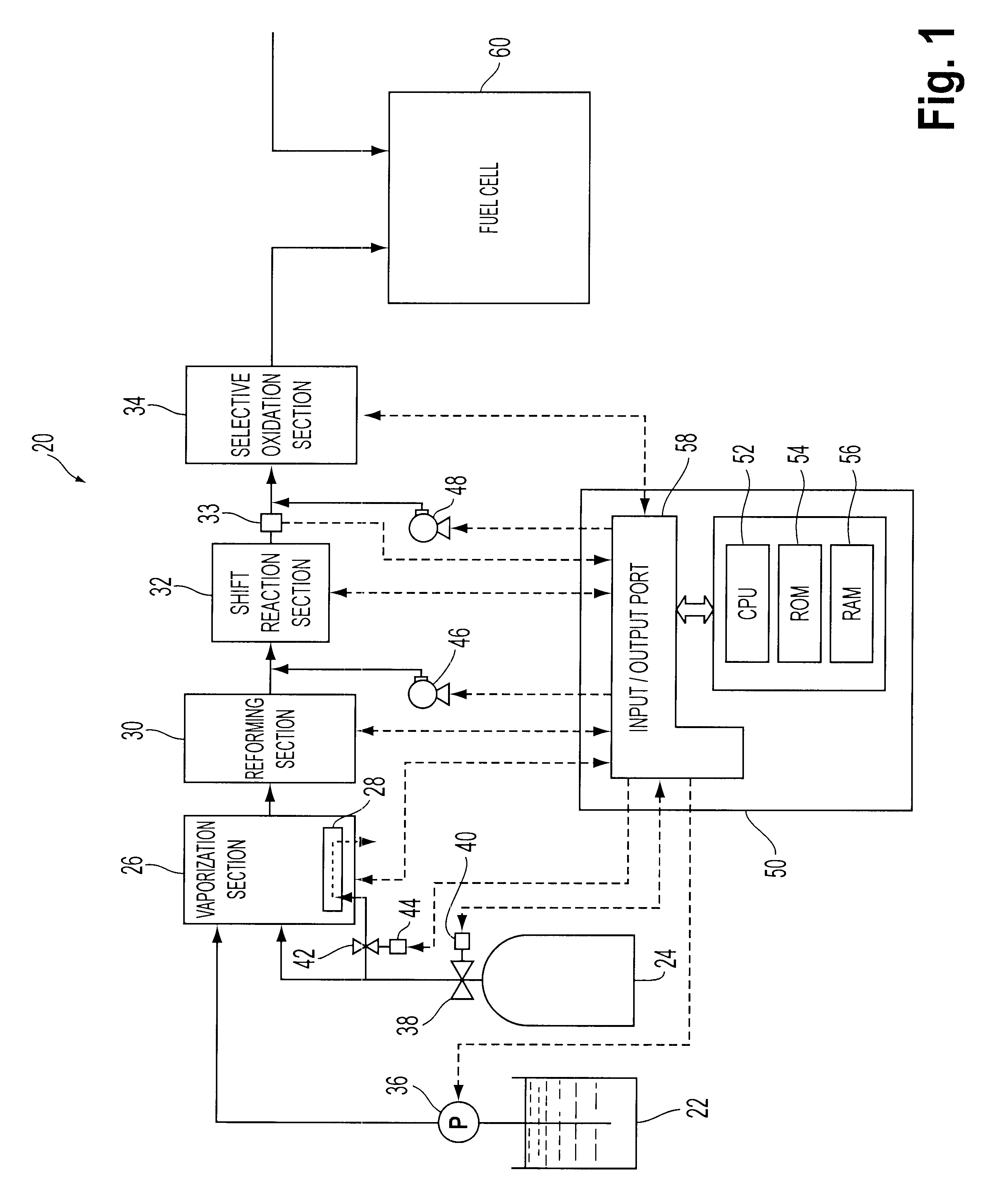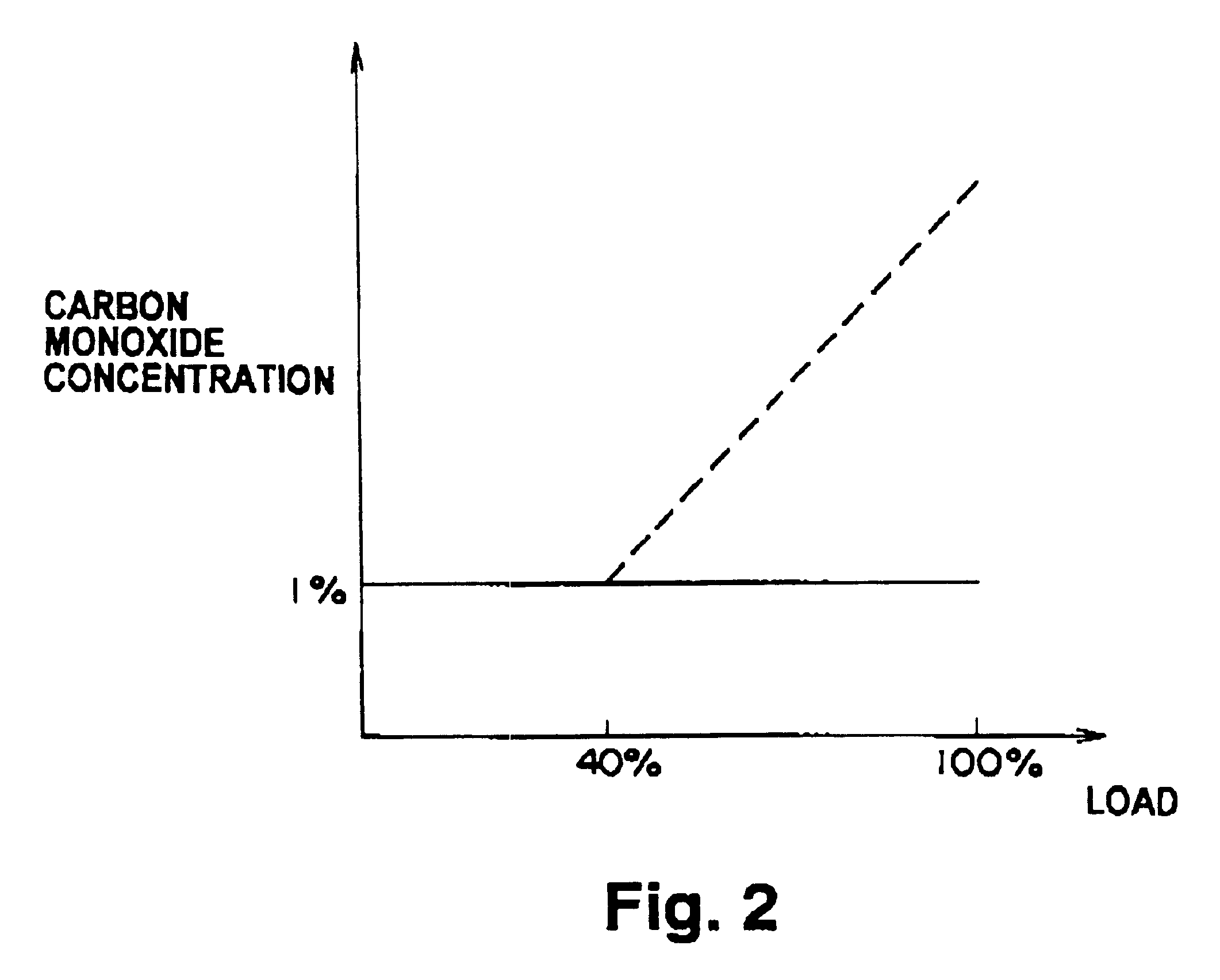Fuel reformer and fuel reforming method
a technology of fuel reformer and reformer, which is applied in the direction of automatic ignition control, process and machine control, instruments, etc., can solve the problems of large size of the reformer, long time required, and large quantity of energy
- Summary
- Abstract
- Description
- Claims
- Application Information
AI Technical Summary
Benefits of technology
Problems solved by technology
Method used
Image
Examples
Embodiment Construction
)
The preferred embodiment of the present invention is described hereinafter. FIG. 1 schematically shows a fuel reformer 20 according to one embodiment of the present invention. As shown, the fuel reformer 20 is connected to a fuel cell 60, and the fuel cell 60 generates electric power by receiving supply of reformed fuel gas from the fuel reformer 20.
The fuel reformer 20 has a vaporization section 26 for vaporizing water supplied from a water tank 22 and mixing vaporized water and natural gas having methane as its primary constituent, supplied from a natural gas tank 24, a reforming section 30 for reforming the natural gas mixed with the water vapor to hydrogen-rich gas containing hydrogen, a shift reaction section 32 for reforming the shift reaction represented by equation 2 on the carbon monoxide present in the hydrogen-rich gas, a selective oxidation section 34 for selectively oxidizing carbon monoxide which were not shifted by the shift reaction section 32, and an electric contr...
PUM
| Property | Measurement | Unit |
|---|---|---|
| molar ratio | aaaaa | aaaaa |
| molar ratio | aaaaa | aaaaa |
| temperature | aaaaa | aaaaa |
Abstract
Description
Claims
Application Information
 Login to View More
Login to View More - R&D
- Intellectual Property
- Life Sciences
- Materials
- Tech Scout
- Unparalleled Data Quality
- Higher Quality Content
- 60% Fewer Hallucinations
Browse by: Latest US Patents, China's latest patents, Technical Efficacy Thesaurus, Application Domain, Technology Topic, Popular Technical Reports.
© 2025 PatSnap. All rights reserved.Legal|Privacy policy|Modern Slavery Act Transparency Statement|Sitemap|About US| Contact US: help@patsnap.com



